News

XIII edition of the Italy-China Week of Science, Technology and Innovation
Nov 26, 2024 — Nov 28, 2024On November 28th ISPRA will participate with a panel dedicated to the AQuaBios Project
The event takes place as part of the bilateral scientific and technological cooperation program between Italy and China. It is promoted by the Governments of the two countries through the Ministry of University and Research of the Italian Republic and the Ministry of Science and Technology of China.

Green and health are the future of our cities
Nov 28, 2024 — Nov 28, 2024 Randazzo/Live streamingOn November 28th in Randazzo (Catania) a conference to talk about urban green management with particular attention to the changes introduced by the new public procurement code. There will be a dialogue between the institutions and those who work for the maintenance and creation of urban and extra-urban greenery, historic gardens, parks and landscape. The event is part of a series of events entitled "Green and health are the future of our cities" which started from Napoli, passing through Milano, Roma, Torino and Bari.

Technology to support the management of protected areas
Nov 14, 2024On 4, 5 and 6 November, the activities of the PNRR DigitAP project "Monitoring of pressures acting on habitats using advanced sensors" began at the National Park of Abruzzo, Lazio and Molise.

"Report the landslide" and the IdroGEO national platform for knowledge of the territory
Dec 11, 2024 09:30 AM — Dec 11, 2024 04:00 PM Genova, Palazzo Ducale, Sala “Enrico Piccardo”, Piazza Matteotti 9 and Streaming liveThe event, organized by ANCI, the Liguria Region and ISPRA, is an opportunity to discuss with the Municipalities on the prevention of hydrogeological risk. Knowledge and updating of information on landslides are fundamental to effective risk prevention and management policies. The use of ISPRA operational tools will be explored in depth to support risk mitigation policies, territorial planning, planning of soil protection interventions and infrastructure design, with the aim of increasing community resilience and awareness. of citizens on local risks.

Meetings on the E.I.A. Points of view on environmental impact assessment
Nov 13, 2024Episode n.6 Meeting with Giuliana Galigari of SNAM
An example of how the V.I.A. that can affect daily life is the construction of the gas network and its supply. An interview with SNAM tells us about its activities and the peculiarities of the projects of the network that runs underground for thousands of km, like a vascular system that crosses the whole of Italy. There is talk of open-air and trenchless excavations, of archaeological finds shown to the population, of drones used for monitoring.

Nature map of Calabria region
Nov 12, 2024As part of the work to create the Nature Map of Italy, the habitat map and the related ecological-environmental assessments for the Calabria region are now available on the ISPRA website.
With Calabria, the Nature Map has been completed on 17 Regions, reaching almost 80% of the national territory.
The map, at a scale of 1:25,000, includes 123 different habitat types.

The ISPRA documentary protagonist of the Allumiere event "Female geology. Female scientists on the move"
Nov 12, 2024Saturday 30 November and Saturday 14 December 2024, MAK Museo di Allumiere
Two days dedicated to scientific reading geology for women | Scientists on the move
1st Reading | Mary Anning. An unusual life carved in stone
2nd Reading | Mary Anning. Strange creatures, those with gigantic bones from the Lyme coast.
During both events the ISPRA video documentary filmed during the scientific trekking organized on the occasion of the national mining day 2024 in the Allumiere Monti della Tolfa archaeological geomining park will be screened.

LIFE REEForest project: monitoring of grasslands in Cystoseira
Nov 04, 2024 — Nov 08, 2024 Punta Licosa, AMP Santa Maria di CastellabateAt Punta Licosa, within the Santa Maria di Castellabate MPA (Cilento, Vallo di Diano and Alburni National Park), monitoring of the Cystoseira prairies was carried out from 4 to 8 November by ISPRA researchers. The intervention was carried out as part of WP4 of the LIFE REEForest project (Restoration of Cystoseira macroalgal FORESTs to enhance biodiversity along Mediterranean rocky REEFs), co-financed by the EU “LIFE21-NAT-IT REEForest/101074309”, aimed at restoration and habitat recovery in Cystoseira (Habitat 1170).
In particular, within the project, ISPRA carries out activities aimed at mapping the distribution and monitoring of the habitat in Cystoseira, processing high-quality images acquired using remotely piloted aircraft systems (RPAS) and other monitoring techniques along the coasts of the Park National team of Cilento Vallo di Diana and Alburni.

The forgotten soil: challenges and opportunities for rural and forestry areas
Nov 20, 2024 04:30 PM — Nov 20, 2024 06:30 PM Rome, Istituto Nazionale di Sociologia Rurale - Via dei Rutoli, 2 e onlineThe event aims to start a dialogue on the topic of the abandonment of marginal lands and the progressive expansion of forest areas. Our objective is to evaluate together with experts the socio-economic and environmental implications of this phenomenon and discuss possible innovative strategies for the sustainable management of territorial resources.

The PNRR activities for the digitalisation of parks begin with the study of the "rebel" habitats of the Pantelleria Island National Park
Nov 11, 2024From 15 to 17 October at the Pantelleria Island National Park we talked about "rebel" habitats, i.e. those habitats that resist particular extreme ecological conditions, climate change and anthropic impact.
This was done by ISPRA researchers as part of the PNRR Project "DigitAP - Digitalization of Protected Areas", starting the floristic-vegetation data collection activities on the island.
The Pantelleria Island National Park represents an excellent example of a Mediterranean environment with species and habitats protected by the Habitats Directive and numerous endemic species, i.e. species present exclusively on the island, such as Limonium secundirameum, a small plant that grows only along the coasts of Lake Bagno dell'Acqua or Limonium cossyrensis, present only along the rocky coasts of the island

Brainstorm One Planet. One Water. One Health
Nov 12, 2024 — Nov 13, 2024 Rome, Palazzo WedekindThe Forum One Health
The event is organized with the aim of offering participants a space for independent and international discussion and to encourage discussion on issues related to the effective introduction of a holistic approach to the resolution of complex problems. By recognizing the multiplicity and interconnection between the various dimensions of environmental and health problems, transdisciplinarity offers the advantage of crossing the boundaries that separate paradigms, rigid institutional norms and anachronistic disciplinary fences.
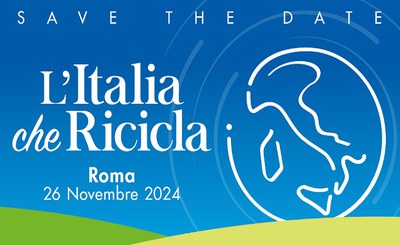
Presentation of the Report "L'Italia che ricicla"
Nov 26, 2024 — Nov 26, 2024 RomeThis year "L'Italia che Ricicla" takes place in a context of intense regulatory ferment, both at community level, with the revision of the Framework Directive on waste, and at national level, where a revision of the Legislative Decree is expected. n. 152/2006. This represents a great opportunity to shift the focus of the sector from "waste management" to "product production", creating the conditions for creating markets for secondary raw materials that express value and that allow the principles of the circular economy to be implemented all over the world within an economic system that is aligned with the environmental benefits deriving from the re-introduction into production circuits of products derived from waste.

Antarctica, ISPRA participates in the 40th Italian research expedition
Nov 08, 2024Among the over 140 researchers who have arrived on the most extreme continent, there is also the geologist Saverio Romeo of ISPRA, working until mid-December at the "Mario Zucchelli" Station. This is one of the two Italian research bases present in the area which, together with the Italian-French Concordia base, have been operating within the National Antarctic Research Program (Pnra) since 1985.

Water resources are decreasing in Italy: in 2023 annual water availability decreased by 18.4% compared to the average
Nov 06, 2024Sicily Region with the least rainfall, Friuli Venezia Giulia the rainiest
The ISPRA Report "National hydrological balance: BIGBANG estimates and indicators on water resources" has been published
In 2023, the total annual precipitation relating to the national territory, with almost 924 mm, corresponding to approximately 280 billion cubic metres, recorded an increase of 28.5% compared to 2022, the year in which the peak was reached with approximately 719 mm. historic low from 1951 to today. However, compared with the average precipitation over the long period 1951-2023 (almost 950 mm), that of 2023 is slightly decreasing.
Why this increase compared to 2022? Mainly due to the high volume of rainfall in the month of May 2023, estimated at almost 163 mm, around 49 billion cubic metres, which was, at a national level, more than double what on average characterizes the same month (around 23 billion cubic meters in the long term).
This is what emerges from the assessments produced by ISPRA through the BIGBANG model which provides the national hydrological balance, the quantitative picture of the water resource and, more generally, the hydrological situation in 2023, reconstructing trends and differences compared to the long-term average values of 1951 -2023 and the thirty-year climatological period 1991-2020.
BIGBANG estimates show that in 2023 the contribution to aquifer recharge in Italy was 53 billion cubic meters (corresponding to 19% of rainfall), compared to an annual average of 22.7% over the period 1951–2023. The amount of precipitation that was transformed into surface runoff - that is to say that it did not infiltrate or was not retained by the ground - is estimated at approximately 66 billion cubic metres, corresponding to 23.7% of the precipitation, compared at an average annual rate of just over 25% over the long term. The share of evapotranspiration reached 59.4% of precipitation, compared to the long-term annual average which amounts to approximately 52%. This was caused by the high temperatures, higher than the reference climatological averages, which also occurred in 2023
National hydrological balance: BIGBANG estimates and indicators on water resources. Update to 2023
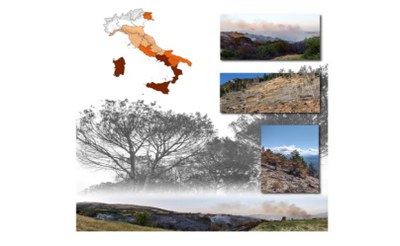
Terrestrial ecosystems and forest fires in Italy: fire season 2024
Nov 05, 2024In Italy, from 15 June to 15 September 2024, 45783 hectares (ha) of total surface area were affected by large wildfires, of which 8890 hectares can be can be attributed to forest cover. The forest category most affected is the Mediterranean forest and scrub (48%), oak and mixed forests (33%).

The wolf in Italy: latest news. From the risk of extinction to new conflicts
Nov 07, 2024 07:30 PM — Nov 07, 2024 09:30 PM Rome, CAI, via di Monte Testaccio, 64The CAI speleological group with the TAM (Mountain Environment Protection) commission of the CAI of Rome organizes a series of in-depth meetings on fauna and biodiversity.
The first meeting will be held on November 7th and will be dedicated to the wolf. Starting from the 1970s, the Italian wolf population went from the risk of extinction to the 3500 individuals estimated in the 2020-21 national survey. The project was a unique experience, coordinated by ISPRA with the contribution of a vast network of operators, including many volunteers belonging to associations such as the CAI. This increase in the species has affected all of Europe but in Italy the conservation and management of the wolf has been peculiar.

Second webinar "The implementation of the Marine Strategy Directive"
Nov 21, 2024 10:00 AM — Nov 21, 2024 01:00 PM WebinarNon-indigenous species and the role of citizen science
The Ministry of the Environment and Energy Security and Federparchi, in collaboration with ISPRA, are organizing a series of 3 online meetings to disseminate the results of the Marine Strategy Framework Directive (MSFD Directive 2008/56/EC) and future prospects.
The growing attention for the protection of the Sea, both by community and national institutions, requires moments of verification and in-depth analysis and it is important for protected natural areas to participate and share experiences.

Raw materials and geomaterials: critical issues and industrial applications
Dec 09, 2024 — Dec 10, 2024 Rome/onlineOn 9 and 10 December 2024, the Workshop "Raw Materials and Geomaterials: critical issues and industrial applications" will be held in hybrid form, organized by the Italian Society of Mineralogy and Petrology (SIMP) and the national Group Georesources, Environment, Cultural Heritage (GABeC) in agreement and cooperation with the National Council of Geologists (CNG) and with the patronage of Assorisorse and SIMP.
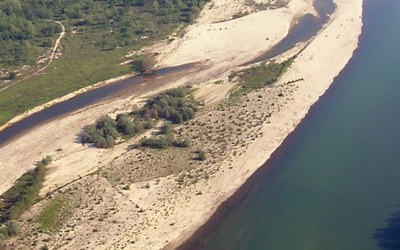
The Nature Restoration Regulation: recovering river connectivity to improve land quality and adapt to climate change
Nov 22, 2024 — Nov 22, 2024 TorinoThe Po river basin district authority in collaboration with the CIRF is organizing the conference in Turin entitled "The Regulation on nature restoration: recovering river connectivity to improve the quality of the territory and adapt to climate change." During the meeting, the implementation process of the Nature Restoration Law will be discussed in depth, both in Europe and in Italy, with special attention to its river component. Emblematic examples of connectivity restoration from various European countries will be presented.

ISPRA participates in LIFE REEForest Project
Oct 31, 2024The LIFE REEForest project (Restoration of Cystoseira macroalgal FORESTs to enhance biodiversity along Mediterranean rocky REEFs), co-financed by the EU “LIFE21-NAT-IT REEForest/101074309”, is aimed at restoration and recovery actions of the habitat in Cystoseira (Habitat 1170) .

Conference expert Team “Water & Land” dell'IMPEL Network
Oct 29, 2024 — Oct 31, 2024 Venice, Centro culturale Don Orione degli ArtigianelliThe conference of the IMPEL Network expert team "Water & Land" will be held in Venice from 29 to 31 October.
The conference, co-organised by ISPRA, opened with speeches from the Ministry of the Environment and Energy Security, the Director of ARPA Veneto and the Vice Rector of Ca' Foscari University. Various interventions, in person or online, also from the European Commission, in particular from DG Environment

Climalab and Meteolab 2024: focus om soil and climate
Nov 08, 2024 — Nov 09, 2024 Forte di BardThe 2024 edition of Climalab (Friday 8 November) and Meteolab (Saturday 9 November) at Forte di Bard will be dedicated to the theme of soil and climate. The study of the interactions between these two elements is fundamental to understanding the complex mechanisms that regulate our planet. The soil, in fact, is not just a simple support for vegetation, but a living and dynamic system that directly affects the climate; in turn, the climate contributes to shaping the evolution and characteristics of the soil.
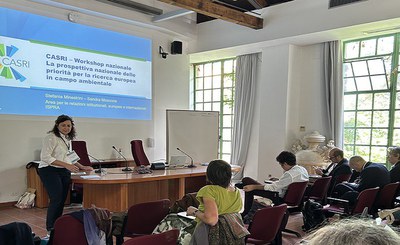
What priorities for European research in the environmental field?
Oct 29, 2024 — Oct 29, 2024 RomeNational workshop of the CASRI stakeholders
On 29 October at the Botanical Garden of Rome, the main Italian research stakeholders met to discuss strategies and tools necessary for European research in the environmental field. The event was organized by ISPRA as part of the European project CASRI (Collaborative Action coordinating and enhancing systemic, actionable and transversal Sustainability Research and Innovation) of the Horizon Europe call program WIDERA, whose aim is to promote collaboration, innovation and support for European research for the formulation of a Strategic Research and Innovation Agenda capable of addressing common gaps for the environmental and sustainability transition.
During this meeting, the preliminary results of bilateral interviews carried out by ISPRA with key stakeholders on four topics of interest were presented: resilient zero-impact circular production systems, biodiversity and climate, sustainable urbanisation, nature, environment and energy transition.
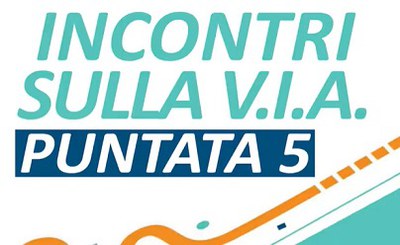
Meetings on the E.I.A. - Episode n.5
Oct 30, 2024The topics will be training and environmental research on EIA, collaboration with universities, differentiated training targets, quality of environmental impact studies, ISPRA Summer School. With the voices of Minister Pichetto Fratin, ISPRA President Laporta and ISPRA General Director Siclari, the training activities of the School of Specialization in Environmental Disciplines in which the EIA theme is inserted are presented. together with the ISPRA manager of the school Daniela Antonietti. The students of the Summer School on EIA also speak: in June 2024, in fact, future environmental technicians were welcomed in Palermo. 65 university students and PhDs from all over Italy and supported by teachers from ISPRA, the National VIA Commission, ARPA, UniPA and UniSapienza in on-the-job training. A lot of enthusiasm and desire to learn among these young people and great interaction between them and some of the protagonists of the VIA, thanks to the educational program accompanied by workshops and inspections.

The role of the OECD in monitoring the green economy and the contribution of Italian institutions
Nov 07, 2024 10:30 AM — Nov 07, 2024 01:00 PM Rimini, Fiera EcomondoOECD countries, which represent more than 60% of global nominal GDP, lead the ecological and energy transition and their volume of data on the development of the green economy is enormous.
This special session on the functioning of the OECD's data collection and analysis policies of the most advanced economies will feature top-level speakers to highlight the contribution to the development of the green economy made by the international organization together with its umbrella organizations, such as the International Energy Agency and the International Transport Forum, with the support of Italian institutions, highlighting the specific role played by the Ministry of Foreign Affairs and International Cooperation (MAECI) and the Permanent Representation of Italy to International Organizations of Paris.
The debate will focus on the economic aspects of the ecological and energy transition.
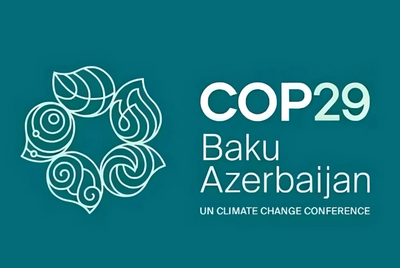
COP 29
Nov 11, 2024 — Nov 22, 2024 BakuThe 29th Conference of the Parties to the United Nations Convention on Climate Change will be held in Baku, Azerbaijan, from 11 to 22 November.
The Baku COP 29 Presidency Plan is based on two parallel, mutually reinforcing pillars:
- the first, "enhancing ambition", combines key elements to ensure that all Parties are committed to ambitious national plans and transparency;
- the second, "enabling action", reflects the fundamental role of finance, a key tool for transforming ambition into action and reducing emissions, adapting to climate change and addressing loss and damage.

Project PROMETHEUS: ISPRA on board!
Oct 25, 2024 — Oct 26, 2024 ThessalonikiOn 25 and 26 October, the kick off meeting of the Life natura PROMETHEUS project took place in Thessaloniki (Greece). Through a multilateral approach (use of systems to reduce accidental catches in professional fishing, deep involvement of the various stakeholders, valorisation of ecotourism, transition towards alien species as targets for fisheries with food value, etc.), the project proposes multiple objectives aimed at improving the conservation status of some emblematic species of Mediterranean cartilaginous fish. ISPRA, together with other national and international partners, is part of a large consortium, rich in experience and scientific excellence in the field of European research on cartilaginous fish, coordinated by Professor Emanuela Fanelli of the Polytechnic University of Marche.
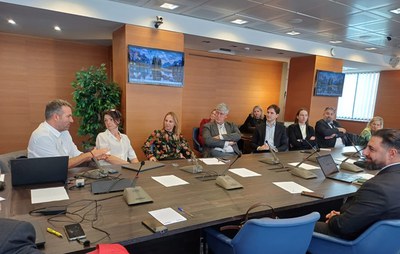
Italian PNRR projects: delegation of European Commission officials visiting ISPRA
Oct 25, 2024 — Oct 25, 2024 Rome, ISPRA, Via V. Brancati, 48Today ISPRA hosted a delegation of European Commission officials who follow the Italian PNRR projects, with the aim of exchanging information and knowledge on the Institute's activities involved in the implementation of the PNRR/MASE Investments. In particular, after a quick description of the ISPRA and SNPA activities, the PNRR MER, URBES and DigitAP projects were presented more closely and in detail. Great interest and desire for interaction on the part of the delegation, which appreciated the importance of the availability of data especially in situations of environmental emergency, of those relating to greenhouse gas emissions, closely linked to the phenomenon of climate change and the commitment and role of ISPRA in terms of sustainable finance.

First extraordinary data from the mapping of coastal habitats as part of the PNRR MER project
Oct 24, 2024The first preliminary data of the PNRR MER "A16 – A18" project for the mapping of Italian coastal habitats have been acquired, available through the WebGIS Virgeo cartographic platform. The project is part of Mission 2 of the PNRR, dedicated to the "Green Revolution and ecological transition", and in particular in Investment 3.5, which aims to restore and protect the seabed and marine habitats.
The main objective is the detailed mapping of Posidonia oceanica and Cymodocea nodosa meadows, marine habitats fundamental for biodiversity. The project uses advanced technologies such as very high resolution satellite images, topographic and bathymetric LiDAR sensors, as well as autonomous vehicles (AUVs), to create a high resolution database useful for the management and protection of marine-coastal ecosystems.
Currently, the preliminary data visible on Virgeo concerns the Liguria region, where a complete dataset of satellite images was acquired from the Maxar constellation, with multispectral resolutions of 1.85 meters for the WorldView-2 satellite and 1.24 meters for the WorldView- 3. These images were processed using advanced algorithms to determine the reflectivity and map the Posidonia oceanica meadows. Furthermore, thanks to the innovative Satellite Derived Bathymetry technique, the bathymetry of the Ligurian coast was obtained

Memorandum Confindustria Cisambiente - ISPRA
Nov 07, 2024 03:30 PM — Nov 07, 2024 04:30 PM Ecomondo, RiminiIllustration and definition of the terms of a Memorandum of Understanding between Confindustria Cisambiente and the Higher Institute for Environmental Protection and Research, aimed at guaranteeing cooperation, through shared initiatives, on issues relating to specific points of convergence. The first step will be the development of a joint study to analyze the costs, both in technical and economic terms, of separate waste collection activities in Italy.
